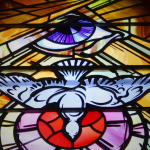 This month’s Christianity Today magazine has an interesting article by church pastor Jordan K. Monson, also an adjunct professor of the University of Northwestern-St. Paul, entitled “The Stonemason the Builders Rejected.” Monson points out something that most contemporary New Testament scholars know but the averaged person in the pew does not: Jesus probably was more of a stonemason than he was a wood crafter or carpenter, as Mel Gibson portrayed him in “The Passions of the Christ” film.
This month’s Christianity Today magazine has an interesting article by church pastor Jordan K. Monson, also an adjunct professor of the University of Northwestern-St. Paul, entitled “The Stonemason the Builders Rejected.” Monson points out something that most contemporary New Testament scholars know but the averaged person in the pew does not: Jesus probably was more of a stonemason than he was a wood crafter or carpenter, as Mel Gibson portrayed him in “The Passions of the Christ” film.
It’s mostly because of the one incident recorded in the New Testament in which people said that Jesus was the son of a carpenter, referring to Joseph. Mark records that the people were astonished when they heard Jesus teach in the synagogue and said of him, “Is not this the carpenter . . . ?” (Mark 6.3). Matthew records that they said, “Is not this the carpenter’s son?” referring to Jesus’ father Joseph (Matthew 13.55 NRSV).
The word in the Greek text that is translated “carpenter” is tekton. Monson points out that teckton is “a word that lives on for us in English words like architect (literally, ‘chief builder’).
“Scholarly dictionaries identify tekton as ‘one who uses various material (wood, stone, and metal) in building’ and ‘one who makes, produces’ and ‘one who constructs, builder, carpenter.'”
The native tongue of Jesus and Jews living in Israel at that time was Aramaic. Yet the New Testament has come down to us in Greek, since it was sort of a universal language at the time. Monson points out that Jesus probably said the Aramaic (and Hebrew) word haras, rather than tekton, and haras has a wider meaning, being “a general term for a builder or craftsman.”
Monson reminds us that Jesus taught so many parables about materials they used in life, such as agricultural fields, wheat, weeds, seeds, fruit, fish, etc.; yet only once in the New Testament gospels do we find that Jesus spoke of wood. It was in the parable about judging. Jesus thereby exposed hypocrisy by saying, “Why do you see the speck in your neighbor’s eye, but do not notice the log in your own eye?” (Matthew 7.3). Monson then says, “It’s not surprising that a Galilean didn’t talk much about wood. Galilee had few trees, and the trees it did have were small. Beams and timbers had to be imported from surrounding countries.”
In contrast, Monson scans the four gospels to show that “Jesus may not have spoken much of wood, but there is one material about which he could not stop talking: stone. This, Jesus and his contemporaries had in abundance, and they built with it.
“He spoke of it constantly, particularly of its use in large building projects: towers, foundations, cornerstones, rocks, walls millstones, temple stones, and winepresses.
“When Jesus reached for a metaphor or symbol, stones and building projects filled his semantic toolbox. If those praising him were silent, even the stones would cry out (Luke 19:40 [emphasis his]). The one who hears his words and does them is like the person who dug deep and laid their foundation on the rock (Matt. 7:24). ‘Which of you, if your son asks for bread, will give him a stone?'”
Monson points out the example of Jesus speaking of a stone as metaphor for himself by saying, “The stone the builders rejected has become the cornerstone” (Mark 12:10). This is no doubt the chief example of Jesus speaking of a stone or stones. Those builders who rejected this cornerstone, Jesus, were of course the religious leaders of Israel. I mean the Sanhedrin charging Jesus with blasphemy guilty of death.
What Monson is saying, here, reminds me of the prophetic dream that the Babylonian King Nebuchadnezzar, who lived in the sixth century BCE, had and the interpretation of it which is recorded in Daniel 2. It was a statue of a man whose four body parts consisted of four different metals depicting four great empires: Babylonian and then prophetically, I believe, Media-Persian, Greek, and Roman. Daniel, the Jewish exile deported to Babylon, told the king the dream and interpreted it for him.
(I believe Daniel was written by the actual exile of the name during the sixth century. Thus, I disagree with those who claim Daniel was written in the second century BCE.)
Daniel first explained, “there is a God in heaven who reveals mysteries, and he has disclosed to King Nebuchadnezzar what will happen at the end of days” (Daniel 2.28). “End of days” means the end of Gentile supremacy in the earth. Jesus called it “the end of the age.” In the blessed world-to-come which follows, God will make Israel the foremost nation of the earth in the kingdom of God on earth, and Jesus will rule the world from his throne at Jerusalem.
After Daniel related about the statue he said, “As you looked on, a stone was cut out, not by human hands, and it struck the statue on its feet of iron and clay and broke them in pieces. Then the iron, the clay, the bronze, the silver, and the gold, were all broken in pieces and became like the chaff of the summer threshing floor; and the wind carried them away, so that not a trace of them could be found. But the stone that struck the statue became a great mountain and filled the whole earth” (vv. 34-35).
In Daniel’s interpretation he said of the stone, “And in the days of those kings the God of heaven will set up a kingdom that shall never be destroyed, nor shall this kingdom be left to another people. It shall crush all these kingdoms and bring them to an end, and it shall stand forever, just as you saw that a stone was cut from the mountain not by hands, and that it crushed the iron, the bronze, the clay, the silver, and the gold. The great God has informed the king what shall be hereafter. The dream is certain, and its interpretation is trustworthy” (Daniel 2.44-45).
So, the stone in King Nebuchadnezzar’s dream portrays the kingdom of God. But I suspect it indicates more than that. Jesus taught so many parables about the kingdom of God. I think he got most of his original concept of the kingdom of God from this most apocalyptic book–Daniel. The kingdom of God is mentioned 14 times in the book of Daniel and only a few other times in the Old Testament, with a few in the psalms and one each in Isaiah 9.6-7 and Obadiah 1.21.
Luke records that one time Jesus was accused of casting out “demons by the power of Beelzebul, the ruler of demons,” referring to Satan (Luke 11.15). Jesus replied, “if it is by the finger of God that I cast out the demons, then the kingdom of God has come to you” (v. 20). Another time Luke relates similarly, that Jesus said, “the kingdom of God is among you” (Luke 17.21). Both times Jesus meant that he was the embodiment of the kingdom God. This was proved by God doing greats works through Jesus, including casting out demons and performing many wonders and even some miracles. Therefore, I think the stone in Nebuchadnezzar’s dream refers to both the kingdom of God and Jesus as its embodiment.
But what does it mean that the “stone was cut out, not by human hands”? Of course, physical things can come into existence just by God speaking his word for it to occur. We read about this at the beginning of the Bible, about creation. For example, we read, “Then God said, ‘Let there be light’; and there was light” (Genesis 1.3). So, no hands were needed for God to create. But in the Babylonian king’s dream, a stone was cut out.
I think this stone cut out without hands might also refer the Son of Man mentioned later in the book of Daniel, from which Jesus surely got his self-understanding for constantly calling himself “the Son of Man” (38x in my harmony of the for gospels). For we read of Daniel’s first of three visions he records in his book, “In my vision at night I looked, and therefore me was one like a son of man, coming with the clouds of heaven. He approached the Ancient of Days and was led into his presence. He was given authority, glory and sovereign power, all peoples, nations and men of every language worshipped him” His dominion is an everlasting dominion that will not pass away, and his kingdom is one that will never destroyed” (Daniel 7.13-14 NIV).
“Ancient of Days” refers to God, indirectly describing him as if an aged father. This vision represents an actual royal ceremony that will take place in heaven during the very end of days on earth in which God gives the human being a kingdom, which is the kingdom of God. Although the text does not state expressly what this man does with the kingdom thereafter, it must be assumed that he takes it to earth. This one like a son of man is Jesus, and he takes the kingdom of God from heaven to earth at his second coming.
But why does this text say “one like a son of man,” whereas Jesus always identified himself as “the Son of Man.” Jesus was merely using a shortened form that referred to this full identification in Dan 7.13. And I believe the ke in this Aramaic text, which is correctly translated “like,” indicates Jesus’ Virgin Birth, which occurred without human hands but by the Holy Spirit of God. For we read that the angel said to Mary, “The Holy Spirit will come upon you, and the power of the Most High [God] will overshadow you, therefore the child to be born will be holy; he will be called the Son of God” (Luke 1.35 NRSV).
So, Jesus is “one LIKE a son of man” in that he was uniquely conceived in the womb of Mary by the power of God through the Holy Spirit. And I think this may be further indicated by the stone being cut out without hands. But as for Jesus previous occupation on earth, he probably was was both a carpenter and a stonemason and perhaps more of a stonemason than a carpenter.
Interestingly, it seems from something Jesus said at the Last Supper that he may still be doing his former occupation in heaven. For he said to his disciples, “In my father’s house are many dwelling places. . . . I go and prepare a place for you” (John 14.2). We can only imagine how Jesus might do that. whether with stones, wood, or whatever, though it all may be spirit rather than physical (cf. Revelation 21-22).

















